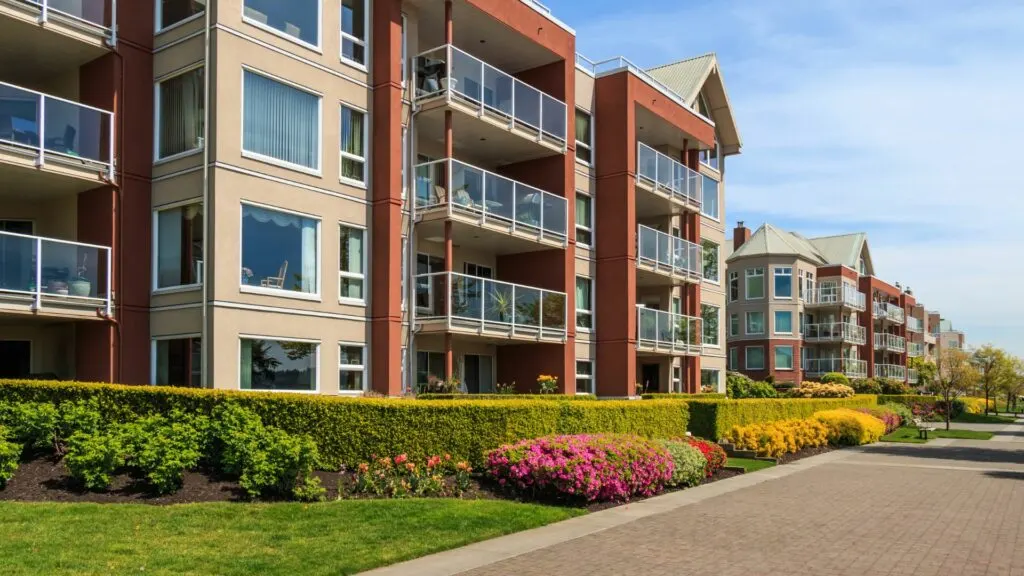Rental communities are evolving faster than ever before. With changes in technology, lifestyle choices, and the economy, renting is no longer just about having a roof over your head.

Today’s renters seek more than just a space—they want a lifestyle. From smart home tech to shared spaces, rental communities are adapting to meet these new demands.
So, what can we expect from the future of rental living? Let’s read the article and look closer at how rental communities are transforming and what the future holds for renters.
Multifamily Trends: Technology, Flexibility, and Convenience
In line with multifamily trends, one of the most significant shifts in rental communities is the growing use of technology. Modern renters, particularly Millennials and Gen Z, increasingly expect smart home features in their apartments. Amenities like smart thermostats, electric doorbells, and security systems are becoming standard, and renters are willing to pay a premium for these conveniences.
Property managers have responded by investing heavily in these upgrades to attract and retain tech-savvy tenants. By embracing innovations, rental communities are positioning themselves as modern, future-focused spaces. These changes align with the evolving expectations of today’s renters.
Flexibility has also become a major priority. With the rise of remote work, many people prefer the option to move more freely. Multifamily housing, with its short-term lease options, offers an ideal solution for those not ready to commit to homeownership. Renters, especially younger professionals, value the freedom to move between cities or explore different living environments without the long-term ties of a mortgage.
Convenience is key. Renters seek amenities that simplify their lives, from on-site package delivery and fitness centers to co-working spaces. For many, these conveniences are not just bonuses but essential features that influence where they choose to live. Property owners recognize that offering such amenities makes their communities more competitive and appealing.
Building Community: Social Connections Drive Renewals
Another notable trend in modern housing is the focus on fostering social connections. Renters increasingly look for more than just a place to live—they want a community where they can form relationships and interact with their neighbors. Properties that offer social events, shared spaces, and activities are becoming more popular as residents prioritize opportunities to connect with others.
Research shows that people who feel connected to their community are more likely to renew their leases. In fact, studies reveal that having just one close friend in a complex can increase the likelihood of renewing a lease by nearly 10%. This insight is driving property managers to create intentional spaces and events where residents can meet and form lasting connections, often supported by dedicated community managers.
Pet-Friendly Living: A Growing Necessity
As pets play an increasingly important role in people’s lives, pet-friendly policies have become a critical factor. Recent surveys show that over two-thirds of renters consider pet policies an essential factor when choosing a home. In response, more properties are embracing pet-friendly policies and adding pet-focused amenities, such as dog parks and pet-washing stations.
These amenities serve not only the needs of pet owners but also help foster social connections among residents. Shared pet spaces often encourage casual interactions between neighbors, helping to build a sense of community around a shared love for pets.
Financial Flexibility: The Appeal of Renting
The desire for financial freedom is another key driver of change in today’s housing options. Many renters, particularly younger generations, see renting as a smarter financial choice than buying a home.
Renting allows them to avoid the long-term commitment and financial responsibilities associated with mortgages, property taxes, and maintenance costs. This flexibility enables residents to allocate their finances towards experiences, travel, and personal goals rather than being tied down by homeownership.
The ability to relocate easily is another appealing aspect. Renters appreciate the flexibility of being able to move for job opportunities, personal reasons, or a change of scenery without the long-term commitment that comes with owning a home. As a result, more housing options are increasingly offering lease flexibility that accommodates this lifestyle.
Looking Ahead: The Future of Multifamily Living
So, what’s next for apartment living? As cities grow and renters’ expectations evolve, the housing market will continue to adapt. We can expect even more integration of smart technology, offering seamless control of home systems through apps and voice commands. Flexible lease options will expand, catering to those seeking shorter commitments and more mobility.
Sustainability is another area likely to shape future developments. As environmental concerns grow, more renters are looking for energy-efficient, eco-friendly living spaces. Green buildings and sustainable amenities will likely become a standard offering in future developments.
Apartment communities will also continue to prioritize community-building efforts, fostering social interactions among residents. As remote work remains popular, we may see more spaces offering co-working facilities or adaptable living spaces that cater to remote professionals.
Conclusion
Rental communities are becoming much more than just places to live. They are transforming into vibrant, tech-enabled environments that blend convenience, flexibility, and community. As the needs and priorities of renters continue to evolve, so too will the spaces they call home.

Jessi is the creative mind behind The Coffee Mom, a popular blog that combines parenting advice, travel tips, and a love for all things Disney. As a trusted Disney influencer and passionate storyteller, Jessi’s authentic insights and relatable content resonate with readers worldwide.
